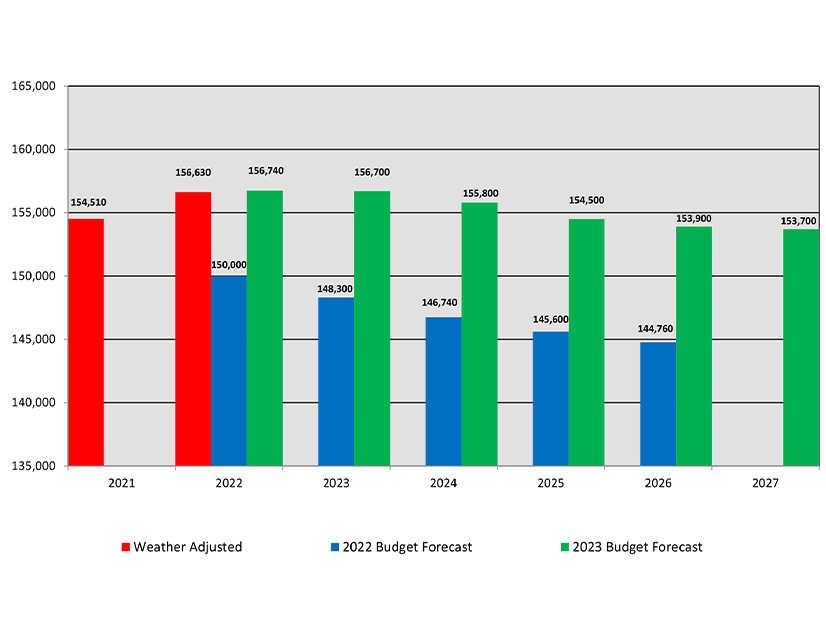NYISO is proposing a $191 million budget for 2023, a 13% increase over the current spending plan, with funding for salary increases, 20 new staffers and 54 projects.
The spending plan will be allocated across a forecast 156.7 million MWh for an RS-1 surcharge of $1.219/MWh, an 8% boost from the 2022 surcharge, Chief Financial Officer Cheryl Hussey told the Budget & Priorities Working Group Sept. 15. The ISO’s projected 2023 throughput represents a 4.5% increase over the 2022 budgeted MWh.
Among the key drivers behind proposed spending increases are “recruitment and retention challenges,” which led the ISO to implement a 3% salary increase for all non-executive employees retroactive to Jan. 1 and targeted hikes for engineers and other positions that a benchmarking study found were underpaid relative to their peers. (See NYISO Details 2023 Budget & Compensation Updates.)
The budget also includes funding for compensation adjustments of 6%. Hussey pointed out that “RTO and ISO peers” have planned similar salary increases with some “ranging from 5.5-7%.”
 NYISO 2023 draft budget breakdown highlights (2023 vs. 2022) | NYISO
NYISO 2023 draft budget breakdown highlights (2023 vs. 2022) | NYISO
The budget will raise the authorized headcount from 608 to 628, with new positions primarily in System and Resource Planning, Stakeholder Services, Operations and Market Operations. These positions are in response to “new, increasing, and expanding workload,” Hussey said.
Although the ISO will use $5.7 million of its 2021 budget surplus to make early debt repayments, increased borrowing in 2022 will increase principal repayments by $700,000 in 2023 over this year.
The ISO said inflation was responsible for $9 million of the $21.8 million increase from 2022.
BPWG Chair Alan Ackerman will present the 2023 draft budget to the Management Committee on Sept. 28, with an MC vote set for Oct. 26.
Pandemic Recovery
NYISO’s Max Schuler presented the working group an updated RS-1 budget forecast for 2023, projecting net energy of 150,580 GWh, 3,900 GWh of exports and 2,200 GWh of wheels, for the RS-1 total of 156,700 GWh. The 2022 budget forecast, originally 150,000 GWh, has been updated to 156,740 GWh.
The New York Control Area’s energy consumption has largely recovered from the COVID pandemic, which saw throughput drop by almost 4% in 2020 from the year prior. Schuler said the state is experiencing “close to across-the-board recovery from the pandemic” relative to the pre-COVID forecast, with the “exception of New York City, which has also gone positive at times in 2022.”
However, the 2023-2027 forecast predicts both net energy and RS-1 totals will decline in outer years due to energy efficiency improvements and behind-the-meter solar growth. Net energy is projected to drop to 147,580 GWh in 2027, a drop of 2% from 2023.
Long Island has already entered in negative growth while the Upstate and Hudson Valley regions are near net 0% energy growth in recent months, signaling the completion of their pandemic recovery and a return to long-term negative load growth trends.


